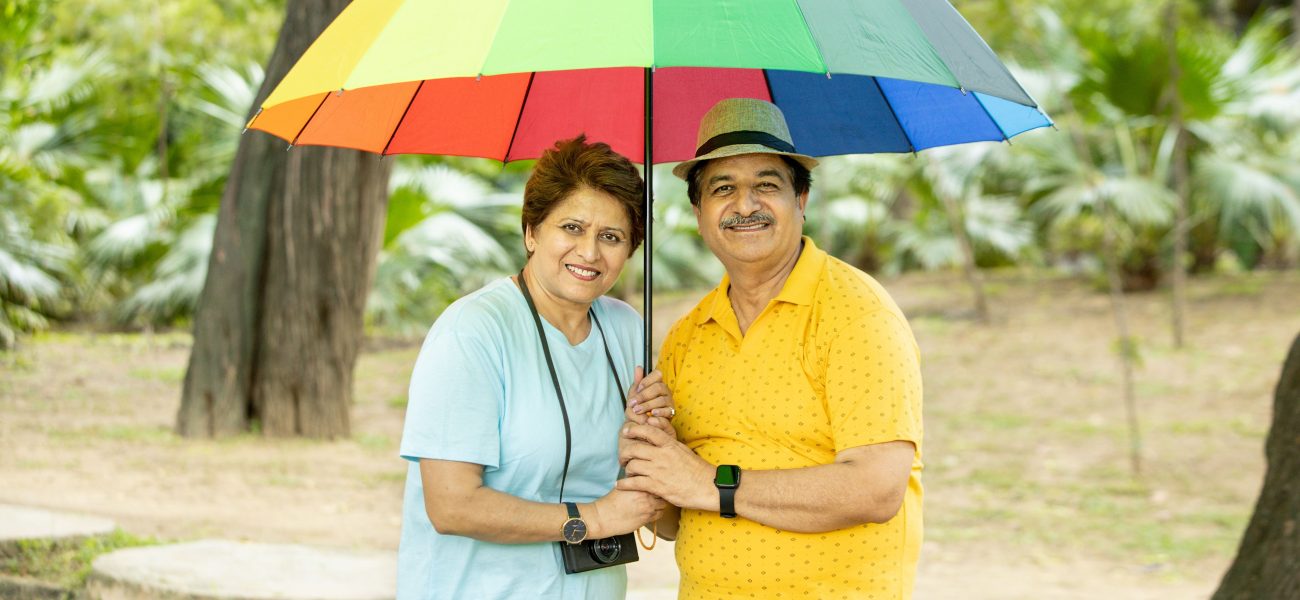Navigating Urinary Incontinence With Adult Diapers During Monsoon
Urinary incontinence, a condition characterized by the involuntary leakage of urine, is undoubtedly one of them. The onset of the monsoon season introduces a new layer of challenges for those affected by it. The increased humidity and moisture that accompany the monsoon can intensify the discomfort and skin-related issues associated with urinary incontinence. This blog sheds light on the journey of managing urinary incontinence, particularly during the monsoon, and explores the pivotal role that adult diapers play in overcoming the hurdles posed by moisture.
Understanding Urinary Incontinence During Monsoon: Challenges and Proactive Management
Monsoon brings with it a refreshing change in weather, but senior citizens who are dealing with urinary incontinence can face unique challenges. The sudden drops in temperature, increased humidity, and changes in air pressure lead to heightened instances of urinary incontinence episodes. Prolonged exposure to damp conditions can cause skin irritation, redness, and even infections. The moisture can weaken the skin’s protective barrier, making it more susceptible to damage.
Moreover, constant dampness can lead to discomfort and even emotional distress for those already dealing with the challenges of urinary incontinence. Managing urinary incontinence effectively during the monsoon requires proactive measures and strategies that senior citizens and caregivers can implement.
Hygiene Maintenance: Regular cleansing and gentle pat drying are crucial to prevent skin irritation. Using hypoallergenic and PH-balanced cleansers can help maintain the skin’s integrity.
Choosing the Right Products: Opt for high-quality urinary incontinence products that provide both absorption and moisture-wicking properties. This can minimize skin exposure to moisture and prevent discomfort.
Frequent Changes: Regularly change soiled products to avoid prolonged contact between moisture and the skin. This practice can greatly reduce the risk of skin-related issues.
Skin Protection: Apply barrier creams or ointments recommended by healthcare professionals to protect the skin’s moisture barrier and prevent irritation.
Maintain a Healthy Diet: Consuming a diet rich in fiber and avoiding foods that can worsen urinary incontinence, can contribute to better bowel health.
The Essential Role of Adult Diapers in Managing Urinary Incontinence
With advancements in healthcare products, adult diapers have emerged as a practical and effective solution for managing urinary incontinence. These discreet and convenient products have transformed the way elderly people experience and cope with urinary incontinence-related issues.
Adult diapers are designed to provide exceptional absorption and prevent wetness from coming into contact with the skin, reducing the risk of skin irritation and infections. It ensures that leakage is minimized, offering users the peace of mind even during daily activities. This is particularly crucial during instances of physical exertion or movement.
Tips for Caregivers
- Encourage elderly people with urinary incontinence to maintain a regular changing routine. Prompt changing of adult diapers helps prevent prolonged exposure to moisture, reducing the risk of odor and skin-related issues.
- Thoroughly cleanse the perineal area during each diaper change. Use mild, pH-balanced cleansers to avoid skin irritation. Pat-dry the skin gently before putting on a new diaper.
- Apply skin barrier creams or ointments to protect the skin from excessive moisture and friction. These products create a protective layer, minimizing the risk of skin breakdown.
- Monsoon weather can disrupt regular routines, so it’s essential to stock up on an adequate supply of adult diapers, cleansing products, and barrier creams.
In conclusion, effectively managing urinary incontinence during humid conditions requires a combination of proper hygiene practices, the use of high-quality adult diapers, and careful attention to skin health. By adhering to a consistent routine, stocking up on supplies, and seeking professional guidance, elderly people and caregivers can navigate the challenges of moisture and maintain overall freshness and comfort.
FAQ’s
2. How does monsoon humidity affect diaper users?
Humidity in the monsoon makes the air moist, which affects how comfortable a diaper feels. A humid environment can cause the skin to sweat more, especially around areas where the diaper is worn. If the sweat and moisture stay trapped, it can lead to skin irritation, redness, or even fungal infections. Since adult diapers cover sensitive skin for long hours, excess moisture combined with poor ventilation can increase the risk of rashes or discomfort. Using breathable diapers, changing them often, and keeping the skin dry and clean become even more important during this time. Staying in a cool, dry place and wearing loose-fitting clothes also helps in reducing sweating and maintaining comfort.
3. What precautions should be taken when using adult diapers during rains?
During the rainy season, keeping the skin dry and clean is essential while using adult diapers. First, ensure the diaper is fully absorbent and has a breathable outer layer. Change the diaper frequently—especially when it feels moist or heavy. Avoid staying in wet clothes or sitting on damp surfaces. Clean the diaper area gently during every change and let the skin dry before wearing a new one. Use talcum powder (non-medicated) if advised by a doctor to reduce friction. Avoid synthetic clothes that trap heat and moisture. Keep backup diapers, wipes, and a dry towel in your bag if you are going out. Carry an umbrella or raincoat to avoid getting soaked. Always dispose of used diapers properly to prevent bacterial growth and bad smell.
4. Can wearing wet clothes worsen incontinence symptoms?
Yes, wearing damp or wet clothes for a long time can worsen incontinence-related discomfort. Wet clothes increase skin friction and can trap moisture near the diaper area. This may lead to itching, rashes, or even infections. During monsoon, clothes may not dry properly due to high humidity, and this can make daily wear damp even when it seems dry. Wearing such clothes can make people feel colder and may increase the urge to urinate, especially in older adults. For those already managing urinary incontinence, this added pressure or chill can worsen symptoms. It’s important to wear only properly dried, clean clothes, and to always keep a spare set handy when going outdoors. Wearing cotton clothes helps as they absorb sweat and dry faster compared to synthetic materials.
5. How can hygiene be maintained while using adult diapers in monsoon?
Good hygiene is key to avoiding skin problems and staying comfortable while using adult diapers in the rainy season. Always wash your hands before and after changing a diaper. Clean the area with gentle, alcohol-free wipes or warm water and pat dry with a soft towel. Let the skin breathe for a few minutes before putting on a new diaper. Do not reuse disposable diapers, and ensure proper disposal. Store diapers in a dry place to avoid moisture damage. Avoid applying harsh creams or powders unless suggested by a doctor. Take regular showers, wear fresh clothes, and avoid sitting in wet places. Keep your room dry and well-ventilated. If you're going outside, pack hygiene items like diapers, tissues, and wipes in a waterproof bag.
6. Are breathable diapers better during monsoon?
Yes, breathable diapers are much better during the monsoon season. They are made with materials that allow air to pass through while still locking in moisture. This helps in reducing heat and sweat build-up, especially in humid weather. A breathable outer layer keeps the skin cooler and less likely to get irritated or infected. When it’s rainy and damp, regular diapers may feel too warm or sticky, causing rashes or redness. Breathable diapers help avoid that. They also reduce the chances of diaper rash, especially when the diaper is worn for longer hours. However, even with breathable diapers, it’s important to change them regularly and clean the skin properly to maintain freshness and health.
7. What should be done if skin irritation occurs due to diapers in monsoon?
If you notice redness, itching, or rashes while using diapers during the rainy season, take quick action to prevent it from worsening. First, stop using the diaper temporarily to let the skin heal. Wash the affected area gently with lukewarm water and pat dry. Avoid using harsh soaps. Allow the skin to breathe by wearing loose-fitting cotton clothes. If the rash is mild, applying a soothing cream recommended by a doctor can help. Do not use baby powders or random creams without advice. Also, switch to diapers with breathable fabric and better absorbency. Ensure regular changing and avoid keeping the diaper on for too long. If irritation continues for more than a few days or worsens, it’s best to consult a healthcare expert.
8. How often should diapers be changed during the rainy season?
During monsoon, it’s a good idea to change diapers more often than usual. This is because the humid air and damp surroundings make it easier for bacteria to grow and skin to get irritated. Ideally, diapers should be changed every 4–6 hours, or as soon as they feel full or uncomfortable. If the person is sweating more due to humidity or wearing clothes that don’t let air pass, then the diaper may need to be changed even sooner. Changing diapers regularly helps keep the skin dry, prevents bad smells, and reduces the risk of rashes or infections. Always clean the area properly with wipes or warm water and dry before using a new diaper. Keeping a diaper change schedule can be helpful.
9. Can travelling with adult diapers be tricky during monsoon?
Yes, travelling with adult diapers during the monsoon season can be challenging due to unpredictable rain, water-logged roads, and damp public spaces. It’s important to carry waterproof bags with enough diapers, wipes, hand sanitizer, and an extra set of dry clothes. Plan your route to ensure access to clean public restrooms or comfortable stops. Disposable diapers are better for travel since they can be used and thrown easily. Keep a small towel to dry yourself if you get wet. Use breathable, quick-dry clothes and avoid sitting on wet benches or seats. If possible, carry an umbrella, raincoat, and waterproof seat cover. With a little planning, diaper use during travel in the rainy season can remain easy and hygienic.
10. What types of clothes are best to wear with adult diapers in monsoon?
During monsoon, it's best to wear light, breathable, and quick-drying clothes with adult diapers. Cotton and loose-fitting clothes work well because they allow air circulation and reduce sweating. Avoid tight or synthetic fabrics like nylon, which can trap heat and moisture, increasing skin irritation. Choose darker colors to avoid visible damp spots in case of light leakage. If you’re stepping out, wearing an outer layer like a long tunic or shawl can give extra comfort and coverage. Carrying an extra pair of clothes in a waterproof bag is also smart in case you get wet in the rain. Keeping your lower body dry and well-ventilated helps improve overall comfort while using adult diapers during the rainy season.






















